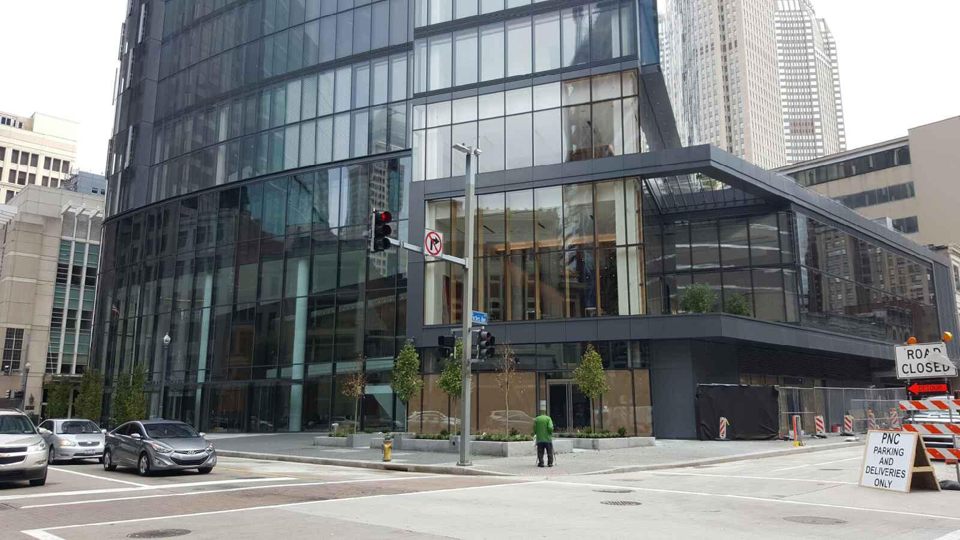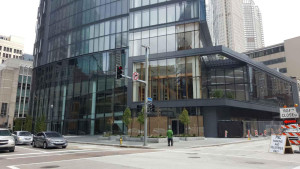

The Tower at PNC Plaza opened for business last week. The building surpassed the highest level of environmental certification with its new green technology.
By Carolyn Conte | The Duquesne Duke
In the newly completed Tower at PNC Plaza, one of the greenest office buildings in the world, employees flush the toilets with rain water.
As people bustle around downtown Pittsburgh on a busy Monday afternoon, several stop in their tracks to look up at the 800,000 square foot, 33-story tower located on the southeast corner of Fifth Avenue and Wood Street. The new headquarters for PNC Financial Services Group, Inc. opened Oct. 1, and features innovative environmentally-friendly technology.
The building exceeded Leadership in Energy and Environmental Design (LEED)’s highest certification, platinum, according to PNC spokeswoman Emily Krull.
“We actually hope someone exceeds our standards, takes from what we made and hopefully can improve upon [the design],” Krull said.
Approximately 2,200 employees will work at the building, which was designed with the goal of being the “greenest office tower in the world,” according to Krull.
To accomplish this goal, the tower features a solar chimney at the top of the building, to draw air up and out and trap heat from the sun.
The building also has a “double-skin façade,” which means the outside of the building consists of two layers of glass with several feet of space between them, which employees will be able to walk around in. This means that even on the 30th floor, employees will be able to get fresh air.
Rooms have blinds that automatically close when there is glare or too much sun, or open when more lighting is needed.
The building includes the most advanced water recycling and treatment system in the country, which efficiently recycles and treats rain or wastewater for flushing, cooling and irrigation.
John F. Stolz, director of Duquesne’s Center for Environmental Research and Education and professor of environmental microbiology, commented on the significance of these innovations.
“I think it’s very important we understand these eco-friendly designs are available,” Stolz said.
He elaborated that in the 1950s into even the 1970s, architects and construction groups were not very concerned with efficiency, which led to many buildings “waste energy.”
“This is a much better use of our resources,” he said.
According to a press release from PNC, the tower will consume 77 percent less water and 50 percent less energy than an average office building.
The project was completed by contractor PJ Dick, Inc.; global design firm Gensler; global engineering firm BuroHappold; Seattle-based sustainability consultant Paladino & Company and New York City-based experience design firm ESI Design.




